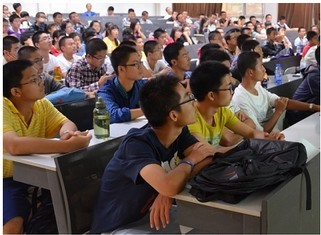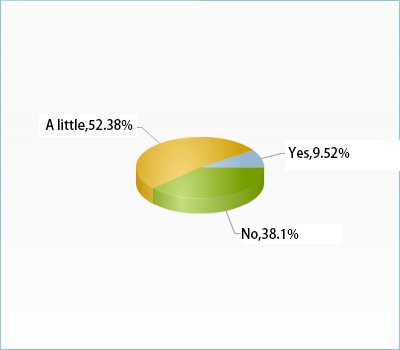Team:BIT/HP
From 2013.igem.org
| Human Practice |
| Event I. Exchange team members with LZU-China |
| July 25-August 1 BIT Team's member Zhou Xiaoyu visited LZU's lab, helping them design and construct IκB-GFP fusion fragments. From July 27 to August 5, our team exchanged one team member with Lanzhou University iGEM team in order to help and communicate with each other. During the time, BIT team's member Zhou Xiaoyu designed and constructed IκB-GFP fusion fragments with LZU-China members in Lanzhou University and satisfied the teachers and team members. |
 |
| August 4-11 LZU-China Team member Li Xiaomeng was invited to interchange with the BIT iGEM 2013 Team. And help us to characterized and constructed a part of Cr sensor. |
 |
| Event II. Communication between Beijing Institute of Technology and Peking University iGEM teams |
| On June 30th, 2013, the team of BIT visited Peking University to communicate with the team of Peking University about the upcoming iGEM. During the meetingthe two teams had a heated discussion over their topics and exchanged their ideas on how to tackle the problems. Both of the teams gained a lot from communicating with each other. First, under the leadership of a student from Peking University, we went to the seminar room where the two teams described their projects in detail. During the dialogue, both sides put forward some questions and cast doubt on the practicability of the other’s project. In the process of questioning and answering, we not only broadened our horizons, but also learned more knowledge. What is more, we knew how to improve our own projects. In the end, the team of Peking University expressed appreciation of our project. We hope the two teams will have outstanding performances in the competition. After all, even though Peking University iGEM team is our competitor, it is also our cooperator from whom we can learn much. |
 |
 |
| After the meeting, we visited the biological laboratory of Peking University, learning about some of their experimental progress. Suggestions were given at the same time on our next step of the experiment. Finally, we gathered at the gate of the library of Peking University to take some photos, which drew an end to the day’s communication. |
 |
| Event III. BIT iGEM team showed the Peking University team around the BIT laboratory |
| In July, we launched a second seminar with Peking University with their team leader and one of the team members coming to our campus. We had further communication for our project and strove for the opportunity for collaboration. We showed them around the lab and visited the microbiological lab and LMB. At last, we went to the meeting room to discuss our experimental progress and project in further detail. |
 |
 |
 |
| We thought out several plans. We have to watch closely what will happen next and gear up to implement any of these solutions. |
| Event IV. Share iGEM with Freshman in BIT |
| In September 13, BIT iGEM team members met with the new students of BIT. These students came into this campus last month and they have not accepted any classes already. BIT iGEM team members introduced iGEM competition to them and told them what synthetic biology is. We told them this is the first time for BIT to take part in this great competition and we need more and more students join with us. They felt surprised about what we did just in this summer and wanted to join with us. After this meeting, we believe,more and more students are familiar with iGEM and eager to share their ideas in the competition. |
 |
 |
| Event V. Have a meeting with NJU_NJUT_China iGEM |
| BIT and NJU_NJUT_China exchanged of their ideas on August. |
 |
| Event VI. Have a meeting with Tsinghua iGEM |
| BIT iGEM association invited the Tsinghua iGEM to have a face-to-face communication with several students of BIT who were interested in iGEM. |
 |
| Event VII. Visit to Dairy Factory |
| To raise the awareness of antibiotic-free milk among people, we visited the Second Dairy Farm in Changyang of Beijing Lvhe Dairy, where the director and staffs welcomed us and showed great interest in our Project. |

 |
| We gave a brief introduction of the modification process of our engineering bacteria and the mechanism of our antibiotic detector. The staffs there are really impressed by the hand-hold detector. |
 |
| During the visit, the director told us that the farm command high quality for their products. Milk secreted by cows that had taken antibiotics would not be allowed to send to factories within certain period to ensure the safety. However, this case still existed in some smaller dairy factories to cut the loss. Therefore, he insisted that our detector should be optimized and popularized among consumers so that malpractice among illegal traders could be revealed and the interest of consumers could be protected better. The curious staffs also asked more questions about our detector, to which we gave detailed explanation. |


|
| In the end, the director and staffs told us that we could further reduce the detection time so that our detector would work more efficiently and become more popular. We promised we would try our best to reduce the detection time and we also thanked them for their thought provoking questions as such questions had always inspired us for the optimization of our detector. |
| Event VIII. Market Survey |
| In order to survey the current market milk about containing antibiotics, we have visited several supermarkets in Beijing. Unfortunately, we found no antibiotics in the milk formula. So does it mean that our milk is safety? In fact, according to our results, no one is aware of the dangers of antibiotics in milk at all, whether manufacturers, as well as consumers. Out of curiosity, we interviewed some citizens, and by the way, ask if they know the milk contains antibiotics. At the same time, whether know the dangers of antibiotics. The majority of our interviewees don’t know the concept of antibiotics in milk but they know the dangers of antibiotics fortunately. So we ask their opinion of our project. Happily they showed great interest and expectations, and provide a lot of valuable advice. |
| Event IX. Online Survey |
| 1. What is your gender? |
 |
| 2. Do you drink milk in your daily life? |
 |
| 3. How do you choose the brand of milk? (Multiple Choices) |
 |
| 4. Are you aware of the antibiotic residual in milk? |
 |
| 5. Do you know which kind of antibiotics there might be in milk? |
 |
| 6. Are you aware of the abuse of antibiotic? |
 |
| 7. Have you ever heard of antibiotic-free milk? |
 |
| 8. Do you consider it a good idea to have antibiotic-free milk with certifications in the market? |
 |
| 9. How much would you like to pay for antibiotic-free milk? |
 |
| 10. If there are home antibiotic detectors available in supermarket, will you buy one? |
 |
 "
"